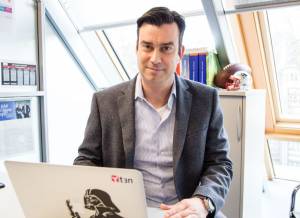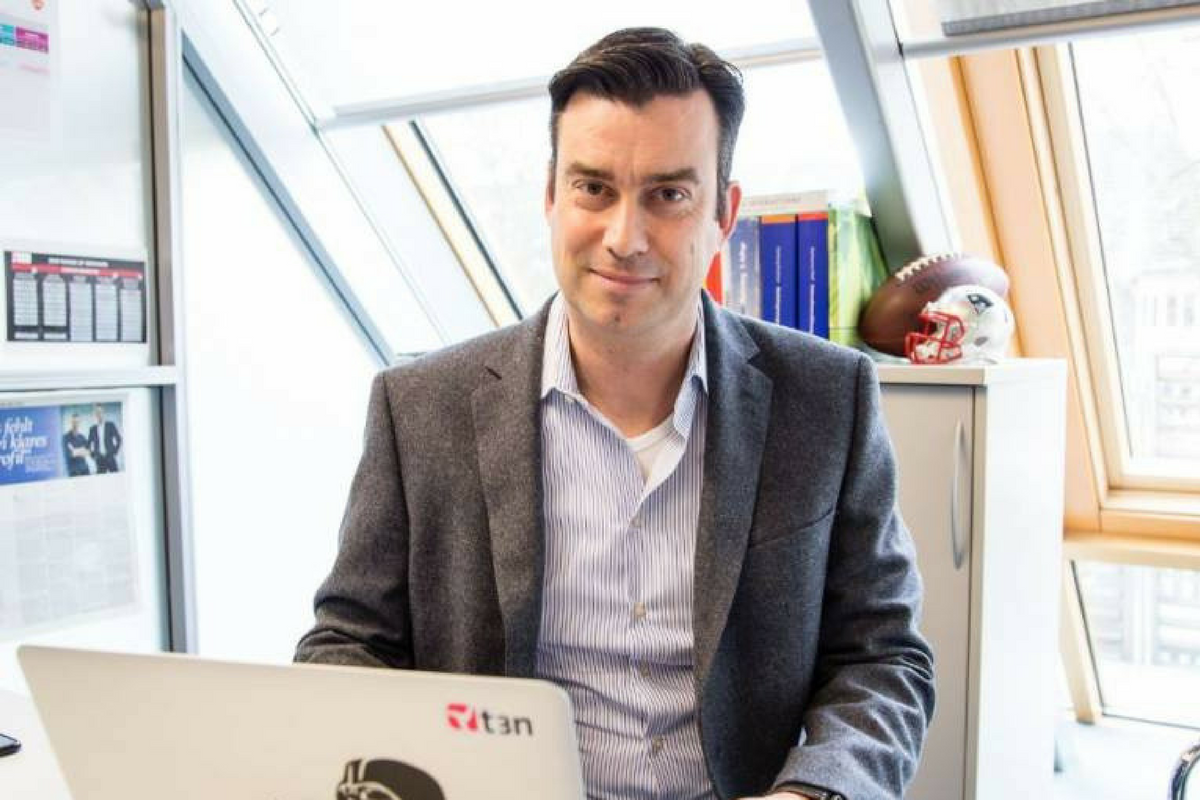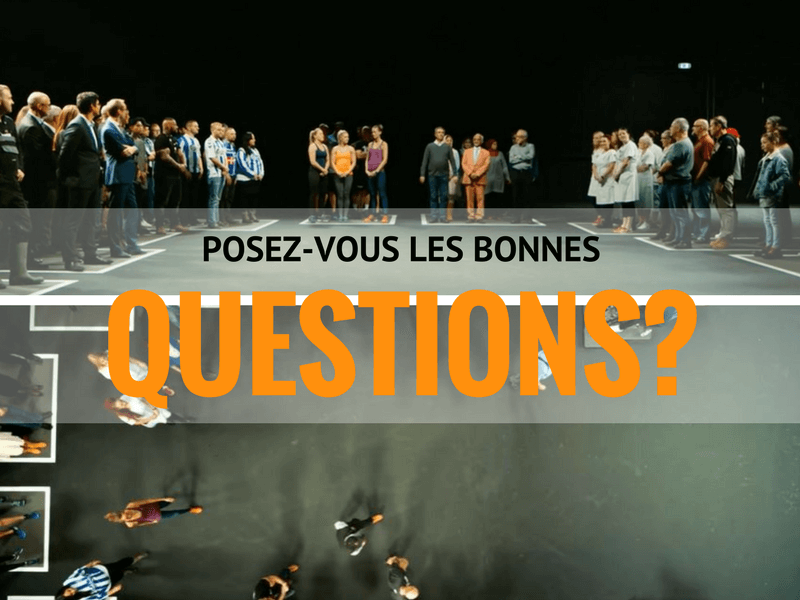In my interview with Marcus Bilgeri, content marketing strategist and managing director at innogy.C3 GmbH (joint venture of C3 and the RWE subsidiary innogy), we explore why content marketing often fails, strategic approaches and internal challenges… and much more.
[This interview has originally been published in Sept. 2017 in German – translated, updated for publication in February 2018]
I have known Marcus Bilgeri (Linkedin / Twitter) for around 3 years now and he has been one of my favorite „sparring partners“ when it comes to discussing challenges in relation to content marketing and its implementation. As his thoughts should not be kept to himself, I asked him to share some of those with me… and you, dear readers :-)
Maël: Marcus, would you briefly introduce yourself and tell us about your career path? What are you doing these days and how did you get there?
 Marcus: Of course, I’d be happy to. I studied business administration and business informatics at the University of Mannheim. Shortly before the end of my studies, I spent two semesters on vacation and worked on „FlyNet – Broadband Internet in the airplane“ for Lufthansa on the route from Frankfurt – Washington D. C. A fascinating job and the beginning of my „digital career“.
Marcus: Of course, I’d be happy to. I studied business administration and business informatics at the University of Mannheim. Shortly before the end of my studies, I spent two semesters on vacation and worked on „FlyNet – Broadband Internet in the airplane“ for Lufthansa on the route from Frankfurt – Washington D. C. A fascinating job and the beginning of my „digital career“.
Since I did not want to specialize in a particular field after my studies and I felt I was capable of taking on leadership roles I decided to continue with an international trainee program in august 2004 at Deutsche Telekom AG. A stay abroad for several months was part of the program and I was sent to Beijing, China where I worked at Detecon (Deutsche Telekom Consulting).
The intercultural challenges paired with the very demanding consulting projects have shaped me further in a way. Once I was back in Germany, I went through various areas of the Telekom Group (CRM, Customer Care, Sales, Marketing) which gave me a good overview of the company very quickly and allowed me to build a large network within the company which would be useful time and again from there on. Following the request and recommendation of the HR department, I moved to the „Corporate Office“ and became an assistant to the Executive Board. This turned out to be an important „springboard“ for my career.
Some management positions in the areas of CRM, retention management, sales and brand strategy followed. I spent most of the time, working in „Brand Strategy and Marketing Communications“ with Hans-Christian Schwingen, the „CMO of the year 2016“. My main tasks were the management of group-wide marketing and communication planning as well as being responsible for the development and management of the group’s award winning sustainability campaign called „Big changes start small“ (translated).
At this time I was working with large creative agencies and discovered my passion for combining „strategy“ and „creation“ to develop efficient and relevant communication. After 9 years of working for the Telekom Group, I „switched sides“ and became managing director of the agency „webguerillas“ (now TERRITORY webguerillas) in 2013.
Almost 3 years later, I took on the challenge of becoming managing director of UDG (United Digital Group), one of the largest digital agencies in Germany, in Düsseldorf and grew the team to almost 70 people. I then integrated the leadership team at HAVAS Germany (largest owner-managed agency network in the world) as Executive Director Digital & Content where I led the expansion of the digital business and the further development of the „Havas Content“ brand.
Which leads us to today (beginning of the year 2018), where I am in charge of the operational management of innogy. C3 GmbH. innogy. C3 is a joint venture of Germany’s leading content marketing agency „C3 Creative Code and Content“ and the leading German energy company „innogy SE“. To explain it in a few words: we are talking about a new hybrid digital agency based in Essen with around 50 people on board who support innogy in the areas of agenda setting, content creation, social media, user experience & interaction design, data science & business intelligence, development and performance marketing.
Maël: You have gathered a lot of experience in the field of content marketing and content strategy, especially with bigger players in different markets… What is your experience when it comes to how companies actually understand and perceive content marketing as an approach or even content strategy?
Marcus: In my opinion, „content marketing“ and „content strategy“ (and what can be achieved through communication) are underestimated on both the agency and the company side. This is partly due to the term „content marketing“, which has been used in an inflationary manner and is often too vaguely defined… and perhaps not the appropriate term at all in the context of many issues businesses are trying to solve. It really doesn’t matter what you call up-to-date, relevant communication at the end of the day if you can prove the positive return on marketing investment (ROI).
Personally I prefer to use the term „Customer Experience Management“ (for which we need „content“ amongst other things)…
Maël: Amen! This is also very important in terms of adopting the right „perspective“ (it’s about the sum of the „content experiences“)!
Marcus:… Yes, because the sum of all experiences a customer has in relation with the brand on the customer journey determines the „Relevant Set“ for the customer, as well as the purchase (and usage) and loyalty.
A recently published Havas study („Meaningful Brands 2017„) analyzed the content of 1,500 leading global brands and found that over 60% of their content out there is „crap“ and doesn’t add value from the customer is standing…
This „content flood“ floods all channels on which businesses publish without real plan or strategy. Only what actually stands out can have an effect. So how do I become a meaningful brand? How do I create „meaningful content“? In my opinion, the philosophy of „content marketing“ and „content strategy“ can help here. The underlying strategic approach provides the foundation for any successful modern communication strategy (whether content marketing or advertising campaign).
Maël: There are already so many frameworks, for successfully approaching this „content“ thing… which one do you use? Or what would a simple and quick frame of thought look like?
Marcus: Today, every brand and marketing manager should ideally be able to answer the following 6 „W“ questions adequately:
Why -> What is my goal? Which KPIs measure target achievement?
Who -> Who is my target group? What „makes them tick“? How do they behave?
What -> Which topics are relevant for both the brand target audience(s)?
Where -> Where, i. e. via which channels can my target group be reached?
How -> Which content formats are suitable or achieve the greatest effect?
When -> In which phase of the Customer Journey do I communicate what, where, how?
If content marketing (or customer experience management) does not work, it can often be attributed to a lack of strategic depth. A strictly tactical approach leads to unplanned content. However, this does not change the crucial importance of content marketing. Creativity today must be combined with strategy, data intelligence, technology and directed in a way that creates real added value for people.
Maël: In your opinion, what are the best examples of a well implemented and (externally) comprehensible content marketing strategy?
Marcus: As a jury member of Europe’s largest Content Marketing Award (BCM-Award, Content Marketing Forum), I have seen quite a few communication cases in the last two years and evaluated them together with other experts. I’ve never been really blown away…
Of course, there are the beautiful small content marketing cases, which could generate attention and/or relevance with the help of qualitative (usually journalistic, editorial) content. But to be honest, I miss the big cases of the big brands…
Maël: What do you mean exactly?
Marcus: Where are the brand, product or advertising campaigns where data has been scrutinized to identify and strategically address clearly defined target groups, needs, topics, communication and sales channels, content formats etc. In the sense that this should result in a holistic view of the customer experience in which the touchpoints / interfaces are being worked with and filled with meaningful content / experiences…
Right now the hype around „content marketing“ is very high. But „content“ is not new and neither is the marketing approach. What is new is the media landscape and the strategic approach it requires.
To answer your question: having a comprehensible content marketing strategy (viewed „from outside“), if it exists at all (which often isn’t the case) does not guarantee successful communication. In order to produce more successful cases in the future, I believe that a stronger interaction of different marketing and communication disciplines are necessary, as well as a very strong collaboration between the brand, content marketing and sales strategy.
This will probably also be reflected in cooperative service provider structures (e.g. more joint efforts in the development and implementation of campaigns between two agencies, because there will always be gaps between the competences of service providers).
What’s for certain: consumers are refusing being advertised to when it interrupts what they are actually trying to do (e.g. watch a movie) and manipulative communication has finally come to an end. People value positive brand experiences and content with a clear value.
But good content (based on a comprehensive content marketing strategy) is a challenging and costly. Anyone who believes that content marketing strategy can compensate for reduced marketing budgets is definitely on the wrong track. I am still looking forward to these so-called „best cases“.
Maël: Where do you see the biggest internal hurdles when it comes to content strategy?
One of the biggest hurdles I see when it comes to content strategy is probably still siloed thinking. As it is usually the case, corporate communication pursues different goals than e.g. sales or marketing communication. Of course, each department has a separate „head of“ with his / her own interests in mind and, of course, separate communication budgets. Often, these different entities need to communication to achieve their own targets but they do so with different understandings of their target groups, different topics being addressed and different objectives.
The result: a diffuse brand image and no uniform customer experience.
In the context of working on a solid content marketing strategy, my first question is always: is there an overarching corporate strategy? Do we have a brand strategy? And…
- Firstly, a strategy for the company’s goals; who do you want to be, where do you want to go?
- And secondly, a brand strategy, i. e. which brand values are defined and how do I differentiate myself from the competition?
In most cases, both are missing. When I emphasize how critical it is to have those, I have often looked at confused faces…
Then I get to hear something to the effect of: „We „only“ want a content strategy, i. e. an overview of the strategic topic clusters (e. g. for a content calendar/editorial plan). We want to get started as quickly as possible and not lose time (and money) with „too much strategy“.“
This vaguely defined but very hyped „content marketing“ discipline leads to impatient customers and a lack of any „culture of content“.
Also, businesses are not well equipped when it comes to „data intelligence“. In my opinion, there is no way around using and making sense of data to be able to anticipate customer needs. It must become the starting point and a guiding principle for how we want to manage and continuously optimize the customer (and content) experience. Data insights as a basis for the development of useful content.
Maël: What you say sounds like organizations need to rethink how they are structured… Is that what you are saying?
Marcus: Modern, digital communication requires a fundamental reorganization of communication in companies. For example, I think the Telekom Group’s approach at the so-called „Telekom Content Factory“ is a successful example of how the company reshaped how they want to approach modern communication. The idea is to be able to produce reusable content that is branded and as channel-independent as possible. This requires central coordination and intelligent interaction between all departments, disciplines and competencies involved. Many such approaches are emerging and many more will follow.
There’s still a lot to do. The shift from a rather campaign-driven communication to an „always on“ / instant communication is an incredibly difficult challenge to take on but also a great opportunity waiting to be seized for brands and companies.
The biggest challenges I see are for organizations to develop and establish a comprehensive content strategy to be used and understood across siloed structures, but also for different players to align on a common understanding. This is something that must be solved in the medium to long term…
I look forward to it.
Maël: Many thanks for the (again fascinating) discussion Marcus and for sharing your thoughts :=) I look forward to many more exciting conversations!



